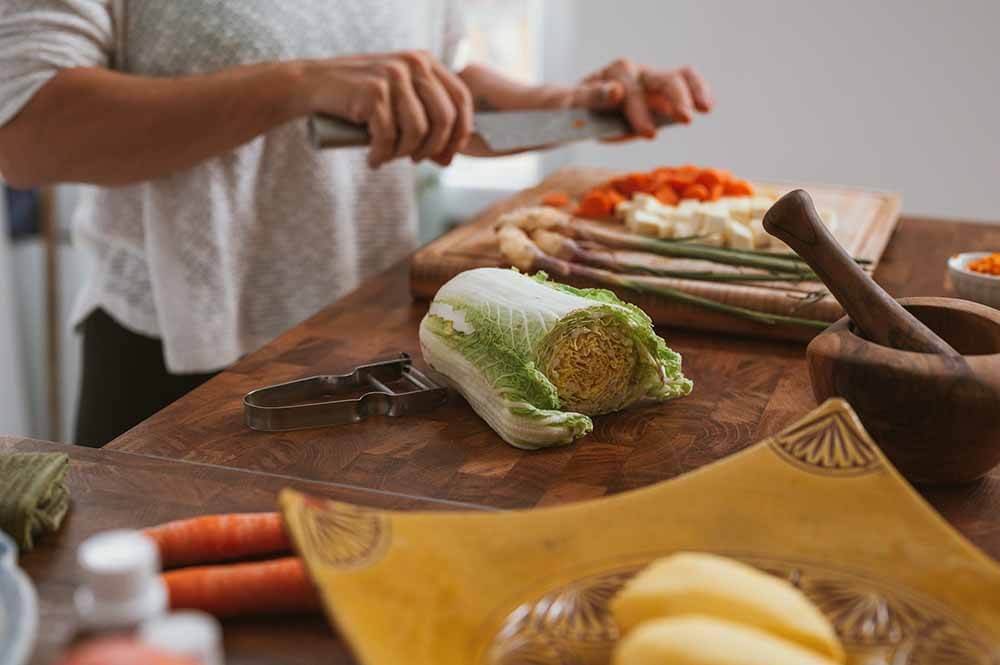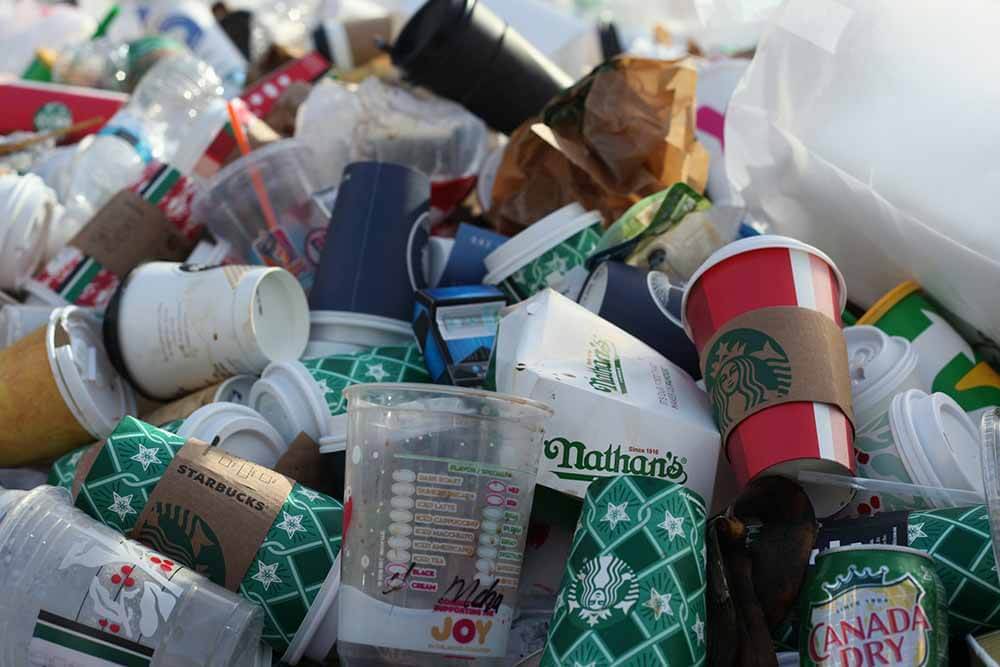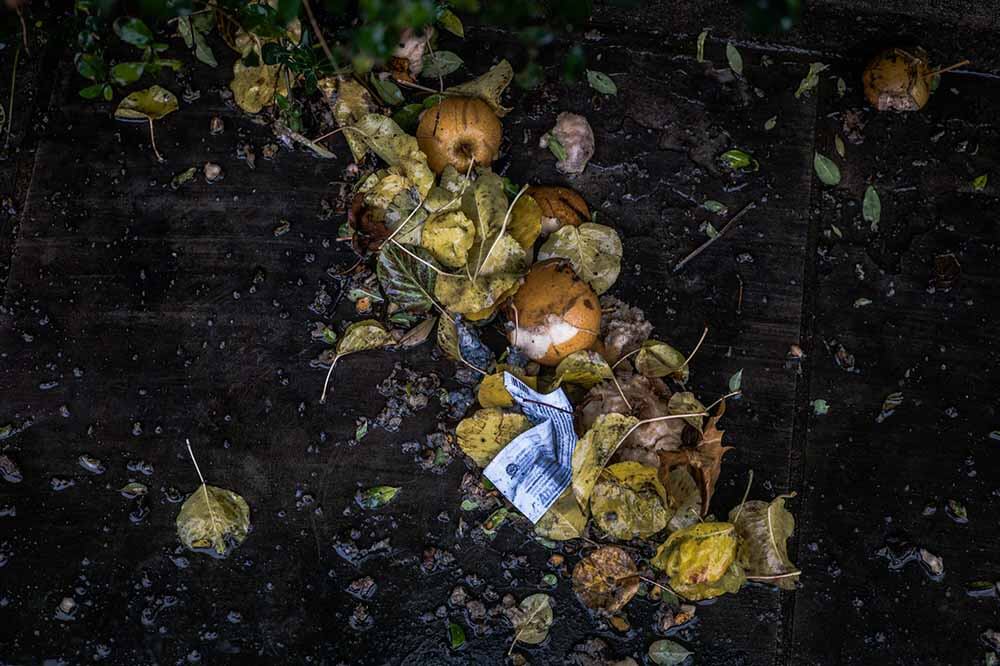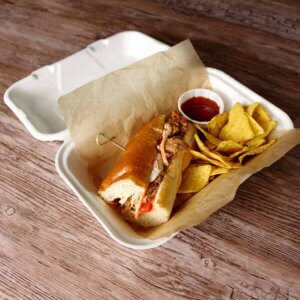How to Manage Restaurant Waste?
- What is Restaurant Waste?
- Types of Restaurant Waste
- How to Minimize Waste Generation at the Source?
- How to Minimize Restaurant Waste through Packaging?
- How to Minimize Restaurant Waste from Customers?
- How to Minimize Restaurant Waste through Staff Training?
- How to Minimize Restaurant Waste Through Technology?
- How to Dispose of Restaurant Waste?
- More about Restaurant Waste Management

Restaurants provide customers with a variety of food and catering services. While we enjoy the food, it is easy to overlook a problem faced by all food businesses—how to manage restaurant waste?
The waste generated by restaurants is already a problem that cannot be ignored in landfills. We cannot stop restaurant operations and affect normal market orders just because we do not produce catering waste. Instead, we should consider sustainable waste management solutions for restaurants, which can contribute to positive development in both our markets and the environment.
What is Restaurant Waste?
Restaurant waste is the discarded materials or byproducts generated during the operation of the restaurant. This waste includes food waste, leftover ingredients, paper products, packaging material, and other items that are used or produced in the preparation and serving of food.
Types of Restaurant Waste
Since different types of restaurants offer different cuisines, the restaurant waste will also be different. Let’s take a look at the waste most restaurants produce.
Food Scraps
Food scraps are the typical waste in the restaurant, no matter it is from the kitchen or the leftovers from guests’ dinner plates. Most of the food scraps can be composed if properly handled, but some of them do not meet composting requirements and put a lot of pressure on landfills, causing further increases in greenhouse gases.
Packing Waste
For reasons of portability and cleanliness, packaging materials are frequently used in restaurants. Takeout containers, disposable cutlery, and single-use cups, there is so much waste material that it could pile up mountains. Especially plastic packing material is hard to break down, which will cause very big environmental problems.
Disposable Items
Napkins, straws, and condiment packets are very frequently used disposable items in restaurants. Although they create convenience for people, they are also large producers of waste.
Understanding the types of restaurant waste will be great for you to make a strategy on how to effectively manage restaurant waste.
How to Minimize Waste Generation at the Source?
While recycling and composting waste is important, reducing waste generation at the source creates a virtuous and sustainable cycle in overall waste management.
Portion Control
Have you ever noticed how many tables in your restaurant have leftover food on their plates after a day’s business? These are all food scraps. However, this waste can be minimized through some methods while still satisfying the appetites of customers. You can remake the menu and include the options for portion sizes, this could allow your customer to choose the meal portions and reduce the food waste.
Preventing Over-Preparation
Don’t prepare food blindly. Food preparation for everyday dishes should depend on past orders, referring to past data will strike a balance between meeting customer needs and reducing wasted food.
Proactively Communicate with Customers
When customers are ordering, you can actively communicate with them and encourage moderate ordering. You can recommend popular dishes, emphasizing quality over quantity. This method also can reduce food waste in the restaurant from the source.
Minimizing food scraps from the source is the cornerstone of managing restaurant waste. This not only reduces the impact of waste on the environment but also saves costs and brings the restaurant’s operations into a healthy development.

How to Minimize Restaurant Waste through Packaging?
Packing material brings higher sales volume for the restaurant since they allows the restaurant can offer takeout business. In the past, plastic and many non-biodegradable materials were used to make single-use food containers, the consequences of extensive use pose a very serious threat to the environment. To prevent further deterioration of the environment, we must use eco-friendly food packaging to replace these environmentally unfriendly materials.
The Situation of Single-Use Plastics
Single-use plastic can be customized into various shapes and sizes to make different products, including food packaging. They are very cheap and convenient to us, but the cost of this convenience is huge environmental pollution. They are hard to break down and pile up in landfills and oceans, harmful to ecosystems and marine life.
The Situation of Non-Biodegradable Packaging
Besides single-use plastic, Styrofoam is also one of the main materials used to make single use food containers. This material is also harmful to the environment and can persist in the environment for centuries.
Change to Eco-Friendly Food Packaging
The idea of seeking eco friendly food packaging has been derived many different types and materials of eco friendly food containers.
Biodegradable Materials
Made from natural resources, such as sugarcane fiber and cornstarch fiber. They can be used to make takeaway containers, plates, and utensils, they are biodegradable and compostable and easy to break down. They are a great alternative to plastic food containers.
Paper Packaging
Paper materials are always used to make food packagings, such as wrap sandwiches, hamburgers, cakes, breads, and salads, and also can be paper bags for takeout orders. The paper material is easy to compost or recycle.
Plant-Based Plastics
The new materials, plant-based or bioplastics are derived from renewable resources like corn or sugarcane. They look like traditional plastics, but this material has a lower carbon footprint and can compost in some specific conditions.
Replacing your single-use plastics and non-degradable packaging to eco friendly food packaging is an environmental trend, as well as a consumer trend.
How to Minimize Restaurant Waste from Customers?
Achieving sustainable waste management requires more than just restaurants themselves. We can also encourage customers to join us and become allies in reducing waste.
Transparent Communication
Restaurants should proactively communicate their sustainable development concepts to customers by placing them on menus, cards on the table, electronic menus, etc. When customers understand that you are committed to reducing waste and environmentally friendly practices in your restaurant, they will be more willing to engage with you.
Incentivizing Reusable Containers
Although single-use food containers are widely used in restaurants these days, the restaurant still can promote to use of reusable containers or encourage customers to bring their own containers by offering discounts on food. In this way, customers can choose the way they want and reduce the packaging waste.
Sharing Success Stories
Tell customers about your restaurant’s food waste challenge and invite them to actively participate in reducing waste. Promote environmental and sustainable concepts. With customers’ consent, share their involvement in waste reduction activities on social media or within the restaurant, inspiring more environmental action.
How to Minimize Restaurant Waste through Staff Training?
Educating staff about recycling practices is great for restaurant development. When your staff have the knowledge to distinguish recyclables and non-recyclables, this will benefit your restaurant.
Minimized Contamination
Effectively classify recyclable items and non-recyclable items to prevent non-recyclable items from contaminating recyclable items and maximize the value of recyclable items.
Improve Recycling Efficiency
Properly sorting materials facilitates recycling equipment processing, enhancing recycling efficiency.
Environmental Impact
Proper sorting and recycling help prevent landfilling, incineration, and incorrect processing of recyclables, save resources, and reduce energy consumption.
Sorting Recyclables and Non-Recyclables
Understanding the types of recyclable materials helps with sorting, so it’s important to train employees on this knowledge.
Glass
Glass containers, including bottles, and jars are recyclable. Make sure the glass containers are clean and without the contaminants, then all the glass items out of your restaurant can be recycled and contribute to circular economy.
Aluminum
In the restaurant, aluminum is always found in the aluminum cans, which are the packing material of beverages. This material has very recycling value to produce many kinds of aluminum products. This method also saves energy compared to producing the new aluminum.
Paper
Paper material packing, including cardboard boxes, paper packaging, and even the paper from office, can be recycled. You need to keep all the paper materials clean and dry, without contaminants.
Training your employees to develop recycling habits will greatly benefit your restaurant’s operations and growth.
How to Minimize Restaurant Waste Through Technology?
In addition to artificially optimizing waste management, we can also use advanced technology to further assist.
Waste Tracking Apps
With waste tracking apps, you can know the real-time waste pattern, which enables the management of the restaurant to find the best solution according to the actual situation of waste. Through the data analysis, what is the waste situation in your restaurant? What foods are popular and what foods are not? Which foods are frequently wasted and which ones do customers finish every time? These data are the basis for your strategy.
Food Waste Digester Machines
A food waste digester machine is a very useful equipment for a restaurant to turn restaurant waste into treasure. This machine can process food waste, including fruits, vegetables, grains, meat, seafood, dairy products, and cooked leftovers. These innovative devices harness the principles of anaerobic digestion to break down organic waste, generating valuable byproducts like biogas and nutrient-rich slurry. The method not only reduces waste but also generates energy that can be utilized within the restaurant.
Optimizing restaurant waste management by using advanced technology, will help you save cost, reduce waste and protect the environment.

How to Dispose of Restaurant Waste?
There are a few ways to dispose of restaurant waste, let’s see what they are:
Physical Sorting
It mainly uses a series of methods to separate the various components in the waste and then recycle them uniformly. On the one hand, this method maximizes the use of materials, and on the other hand, it minimizes the possible pollution caused by waste. However, due to its high cost, most countries do not use this method except for a few developed countries.
Grind-to-Discharge Method
As early as the 1940s, the United States had successfully developed a personal household food waste disposer. The specific principle is as follows: using high-speed rotating blades to break up the food waste contained in the inner tank, and then flush the mixture into the sewer. Solve residents’ worries about discarding and storing food waste. At the same time, Japan has also developed food waste disposers very early, and some are even equipped with ozone deodorizers to remove various odors produced by food waste.
Landfill
The landfill treatment of food waste is an anaerobic digestion treatment method that can decompose the organic matter into CH4 and completely dispose of the waste. However, landfill requires land, so land needs to be acquired to build a landfill. The continuous expropriation of land has naturally resulted in a large reduction in cultivated land.
Anaerobic Fermentation
Anaerobic fermentation of food waste is in an anoxic or anaerobic environment. The organic macromolecules of food waste are decomposed into methane, carbon dioxide, water, etc. under the action of facultative bacteria and anaerobic bacteria. During the anaerobic fermentation process, it can be collected As a clean energy, biogas can alleviate the energy crisis to a certain extent and realize the reduction and resource utilization of food waste. The anaerobic fermentation of food waste has a high degree of automation, and the biogas produced can be used for power generation, central heating, etc. However, the equipment and technology required for anaerobic fermentation treatment are complex and the project investment is large. It is also difficult to clean and process the digestate residue left by anaerobic fermentation.
Composting
Microbial treatment technology, high-temperature aerobic composting, means that in a high-temperature aerobic environment, organic macromolecules are decomposed into soluble organic matter by extracellular enzymes secreted by aerobic bacteria, and are absorbed by aerobic bacteria. Aerobic bacteria perform aerobic respiration and oxidize part of the absorbed soluble organic matter into water, carbon dioxide, etc. to generate energy to maintain their life activities. The other part is converted into nutrients necessary for the proliferation of aerobic bacteria, allowing the aerobic bacteria to continue to proliferate. . High-temperature aerobic composting uses high-temperature composite microorganisms to degrade food waste. It uses natural gas as fuel to heat the fermentation environment to a high temperature of 55-75 degrees Celsius. After 8-12 hours, the food waste degrades into biological humic acid fertilizer (land conditioner). ). The humic acid fertilizer produced is more expensive and is generally used for high-end fruit cultivation. Microbial fermentation treatment of food waste has better reduction and resource utilization effects and has a high single-machine processing capacity. However, because fermentation requires a high-temperature environment, it consumes higher energy than other treatment methods.
Biotransformation Technology
The bioconversion of food waste is a process that simulates the material cycle in nature. It is transformed by microorganisms, insects, and other organisms to maintain the essence of protein, avoid the disadvantages of the “homogeneous contamination effect” of feed processing, and eliminate safety hazards. Insects such as black soldier flies and house flies are commonly used as media for the bioconversion of food waste. After the insect larvae produced by breeding are dried, insect proteins, insect oils, etc. can be extracted. The technology required for the biotransformation of kitchen waste using black soldier fly larvae is relatively simple and easy to promote. It can attract idle rural resources to intervene, rapidly promote the kitchen waste treatment industry, and drive the development of related industries such as insect feed processing, insect protein extraction, and aquaculture. This changes the current situation where a large amount of kitchen waste is processed solely by individual kitchen waste treatment plants.
More about Restaurant Waste Management
We talk about some methods about how to minimize restaurant waste. What if you prepare too much food for the day? What if your number of customers that day is far less than expected? What if your ingredients must stay fresh and cannot be used the next day? You have a great way to consume these ingredients- donating.
You can contact the local food banks and charities to donate the food. Doing so is a win-win: not only does it consume ingredients without waste, but it also enhances your restaurant’s reputation locally.

John Q
John Q is Eco March’s Product Manager. With 5 years of prior experience in the food industry after graduating from university, he has been an integral part of Eco March. He excels in creating and developing eco-friendly food packaging products with a keen focus on enhancing the consumer experience.


